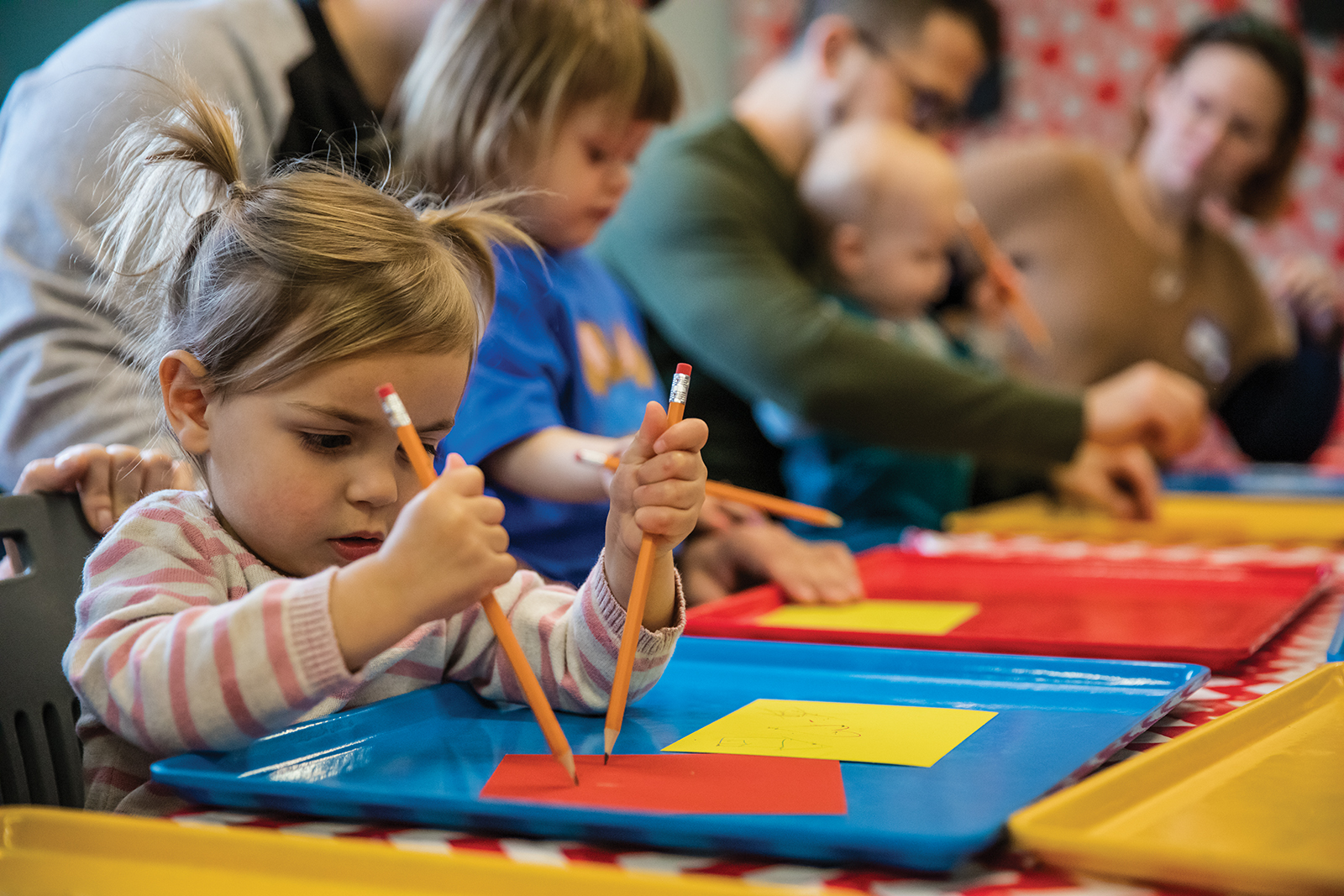Yoga For the Mind

Traditionally, people have used art therapy to work through emotional issues. Over the years, research has proved art is additionally beneficial for the overall health and development of the brain and body for daily function throughout all stages of life.
Merri Isom, a licensed professional counselor and registered art therapist who works for Art Therapy Austin, described what she does using a simile.
“Art therapy is like yoga, but for the mind.”
“Art therapy is kind of like stretching your brain creatively,” Isom says. “People tend to think just because the mind and body are two different words, they are separate, but they are absolutely intertwined.”
Delilah Knuckley, gallery education manager at Thinkery, connects the growth of mind and body in a program called Art Start.
The program, for children ages 12-48 months, allows children and their parents to explore artistic expression by creating art. By participating in these activities, children work on developing strength in fine-motor skills, hand-eye coordination, spatial awareness and expressing emotions freely.
Knuckley defined art as an innate expression of creativity and culture. She says for early learners, it provides a sensory exploration that harnesses their natural curiosity to help them in development.
“At a young age, art helps build a large variety of skills including language, socio-emotional development and motor skills,” Knuckley says. “In the world, we need people with all kinds of skills. Activities which stimulate creativity are healthy for all children, because it allows them freedom to use their imagination and ask all the questions they want.”
During Art Start, children practice gross- and fine-motor skills through hands-on activities, movement and play using things like clay, colorful packing peanuts and feathers to make unique creations with their parents.
Kelly Bonavita and Mario Valentin say since taking their children to the Art Start program, they have witnessed them develop healthy skills through art.
“At this age it is a process — not something you see week-to-week but month-to-month. I can see growing in her brain,” says Bonavita. “The more exposure to art, the more confidence she has, realizing she can explore more things like this on her own.”
Valentin says he can see how art is becoming a way for his son to express himself.
“Anytime you need to express yourself, you can do it through art, and he does it a little bit at a time,” Valentin says. “If he is angry, he scratches harder, and his color strokes are faster. And the more he does it, the more he will learn this is one form of saying what you’re feeling.”
Knuckley says embracing art at a young age means creating connections in the brain that will foster a lifetime of learning. These connections can be built at any span of life.
Neuropsychologist Lindsay Heath is president of Small Victories Foundation. She works with people who suffer from brain injuries who are seeking to reform broken connections in the brain through art.
Heath explains that our brains are neuroplastic, or malleable. When we create art, our brains are able to heal, change and build new connections. By participating in repetitive actions, art therapy can help people form new connections.
In the brain, there are neural pathways, or connections and routes that link together other parts of the brain. Through art, we stimulate the creation of new neural pathways. This is how information gets from point A to point B and allows us to function doing everyday activities.
Heath says the creation of new pathways is how you learn new skills at any age. It can also help with the recovery process.
“Through art, you’re getting a form of expression, and you can help form connections in whatever part of the brain you are targeting,” Heath says. “For example, if motor skills are damaged, you can form new pathways with a lot of repetition using your hands to play guitar or do pottery.”
Like Bonavita noticed with her daughter, Health says she can see how art has helped people with confidence in their ability to do daily tasks after struggling with them before art therapy.
“Knowing you have the ability to sing can give you confidence to talk to the cashier at the grocery store,” Heath says. “Or, knowing you can make a beautiful clay pot may give you confidence to go back to work in the office or fold clothes in the washroom.”
Building new neural pathways through art not only helps develop physical skills, but also helps overcome mental barriers.
Research has found a part of the brain can shrink when people suffer from PTSD, trauma or substance abuse.
“You can see how, for people who are very traumatized, the world is really small and repetitive. They may be depressed or have anxiety,” Isom says. “Using a modality called EMDR creates openness and moves these thoughts into the past.”
EMDR helps clear neural pathways from dysfunctionally stored memory, or pathogenic memory. Once these memories are cleared, new neural circuits can be created, returning the brain to its normal size.
“Adding art therapy to this modality can add in the extra depth,” Isom says. “It can show during treatment what is coming up in their minds, even if it’s an abstract. Art therapy can act as a great adjunct for other kinds of therapy.”
Isom says art creates a sense of safety and containment that can be helpful for emotions when we get stuck in their brains.
Heath also agrees that art helps facilitate healthy living.
“You cannot underestimate the importance of mental health,” she says. “Through art, we can improve overall well-being. Not having the motivation to exercise or take care of ourselves stems from our mental health — which art can help keep healthy.”






